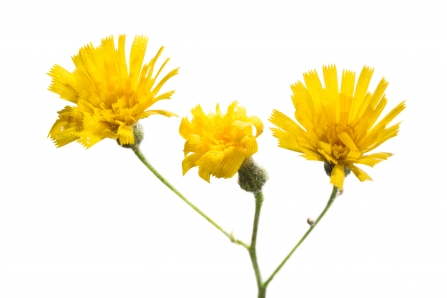A rare plant previously thought to be globally extinct has been rediscovered in the Peak District National Park.
Two small populations of the leek-coloured hawkweed, 62 plants in total, have been found flowering on the banks of the Monsal Trail, in Chee Dale.
Leek-coloured hawkweed flowers are yellow, similar to a dandelion but smaller. The plant gets its name because its leaves are the same chalky-green as the vegetable, leek.

